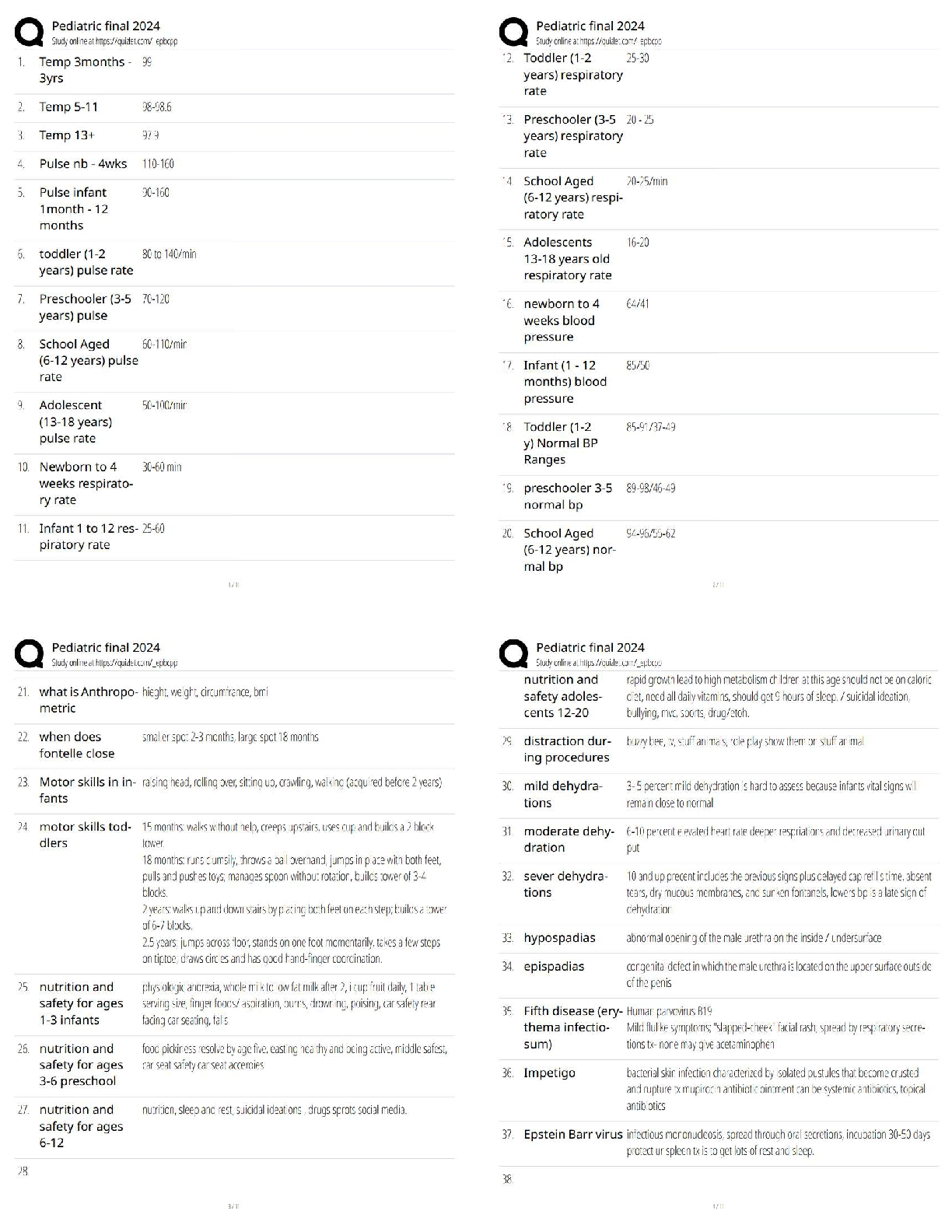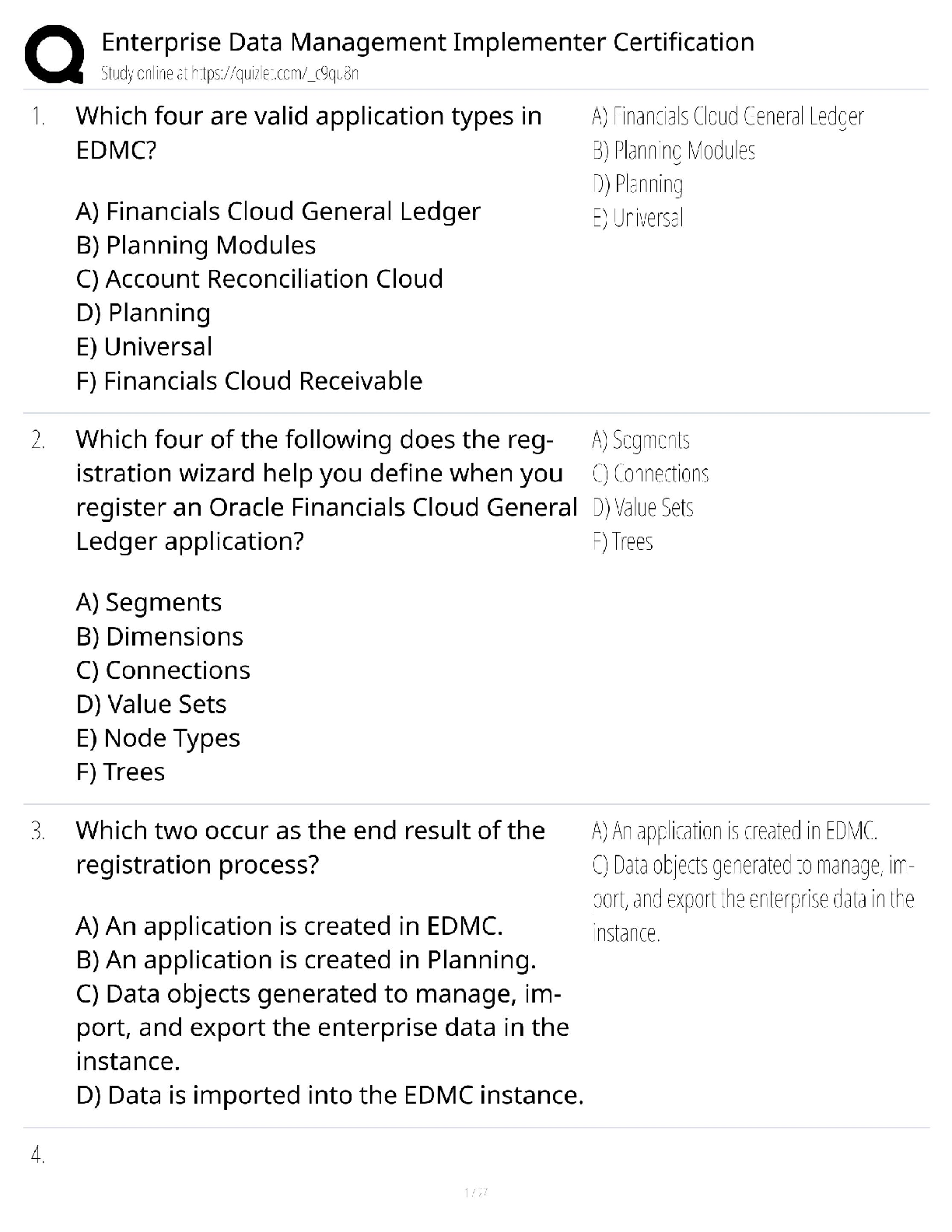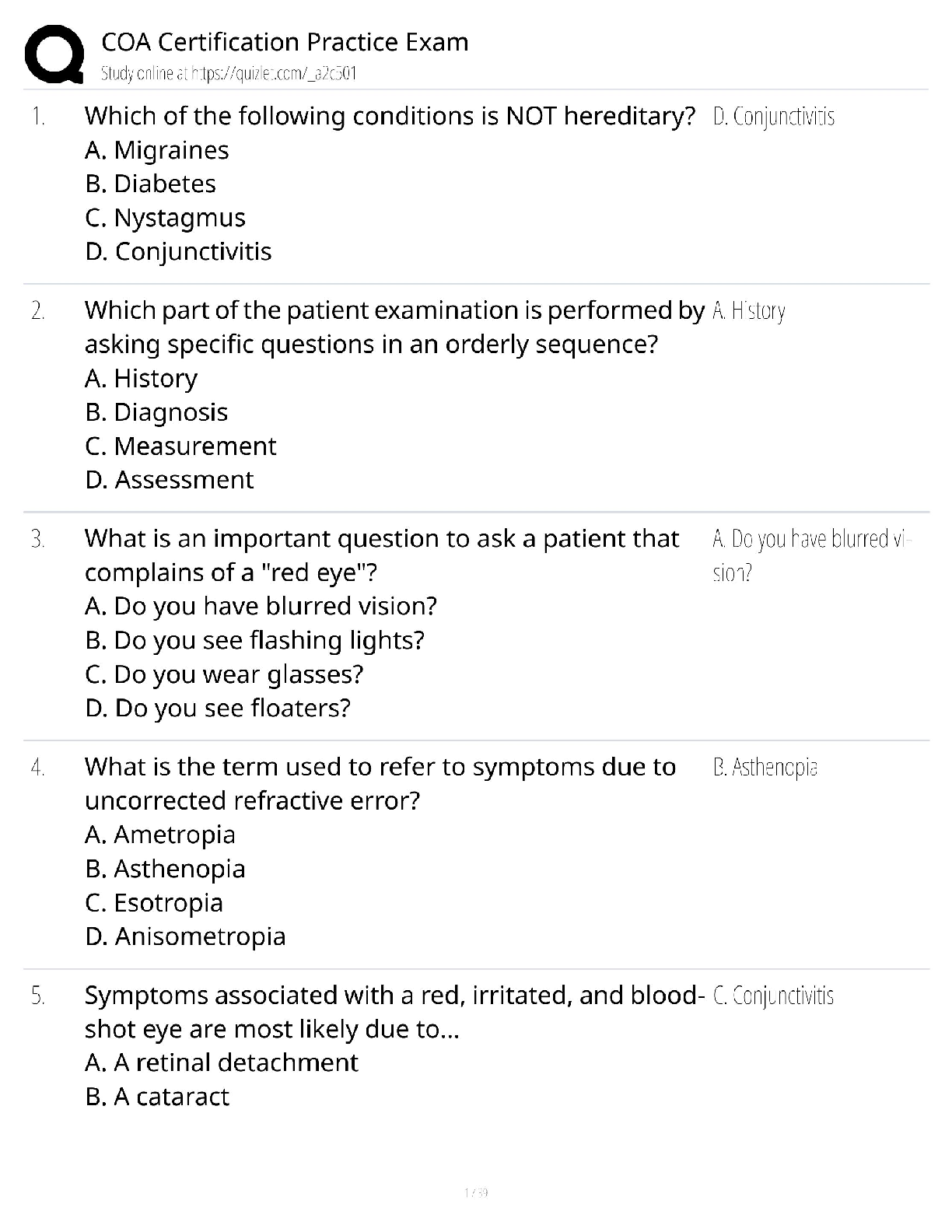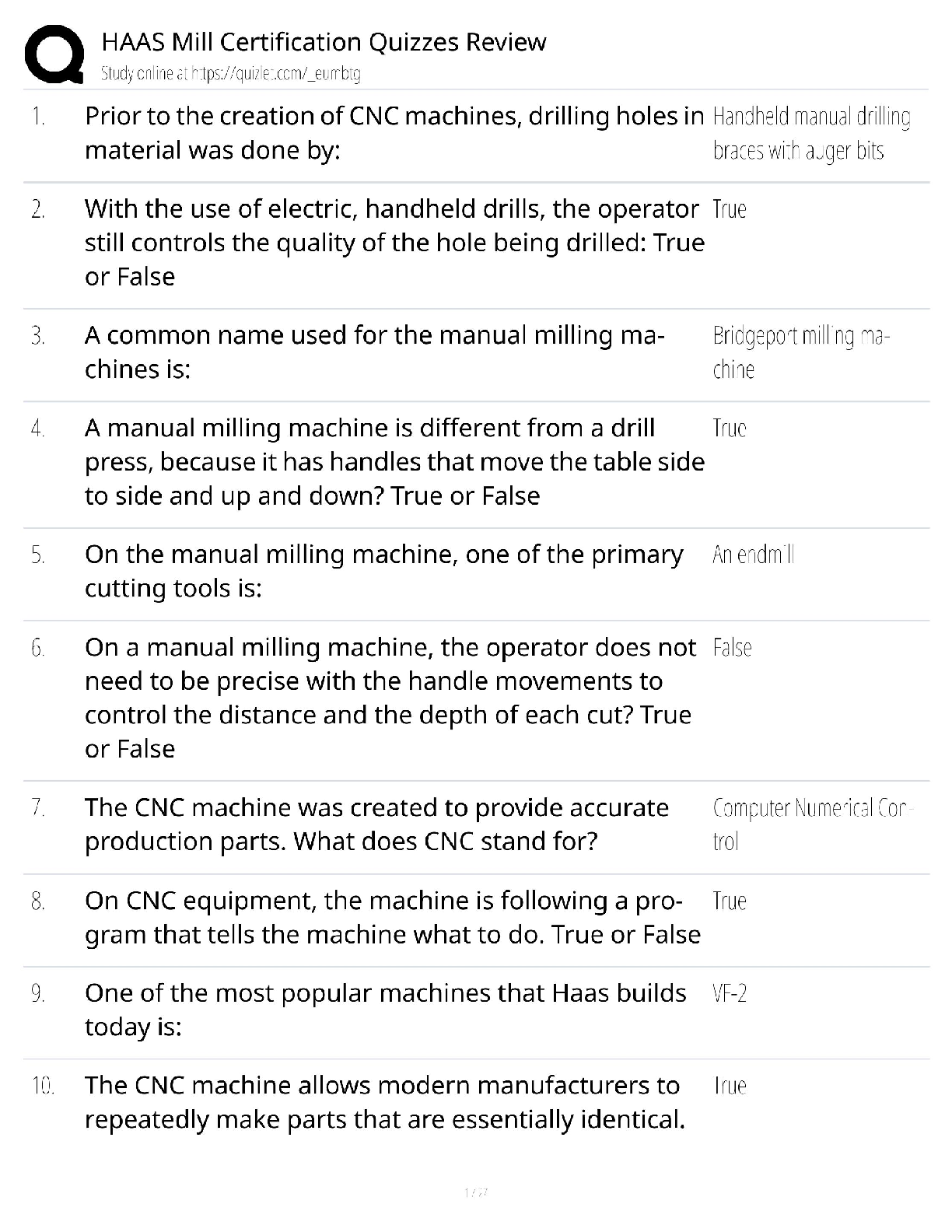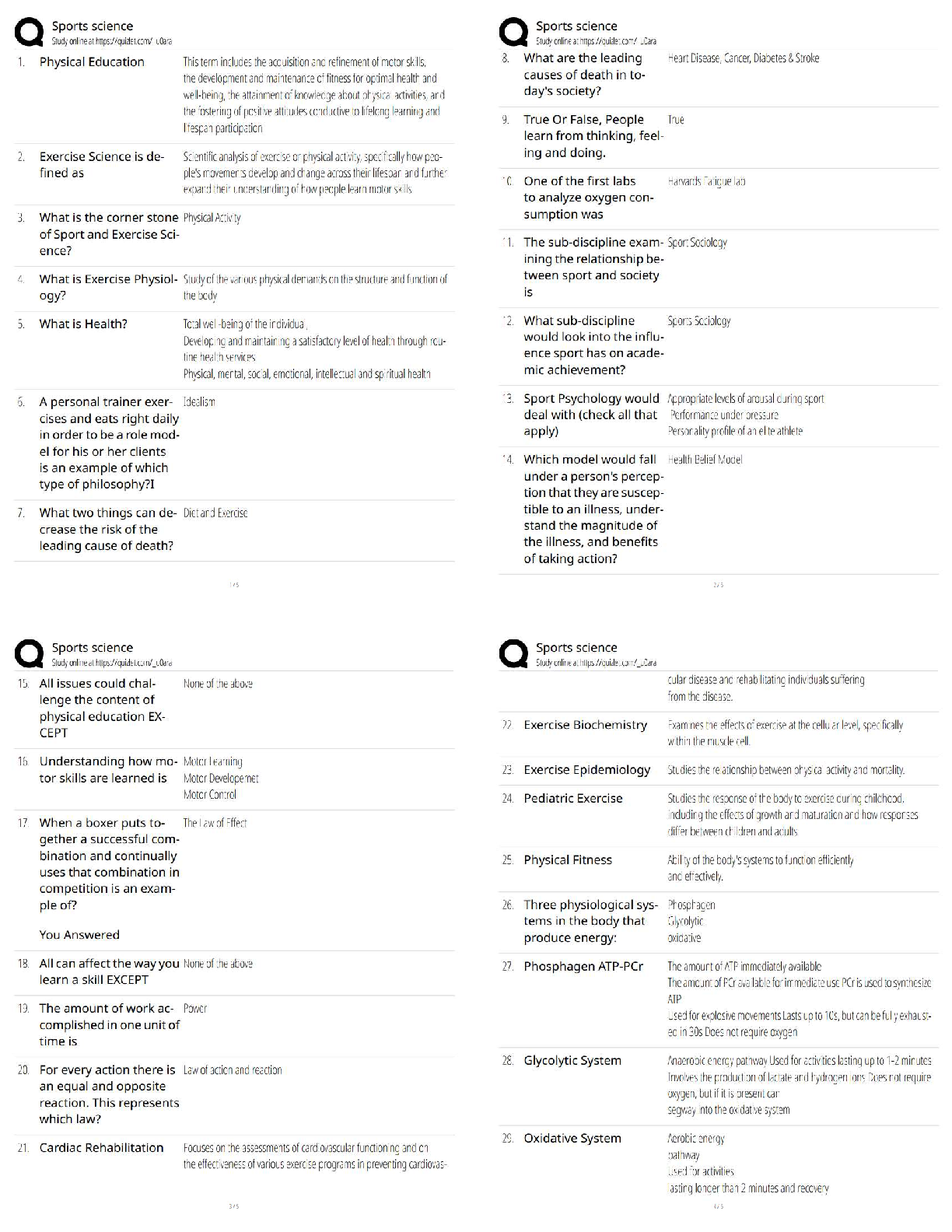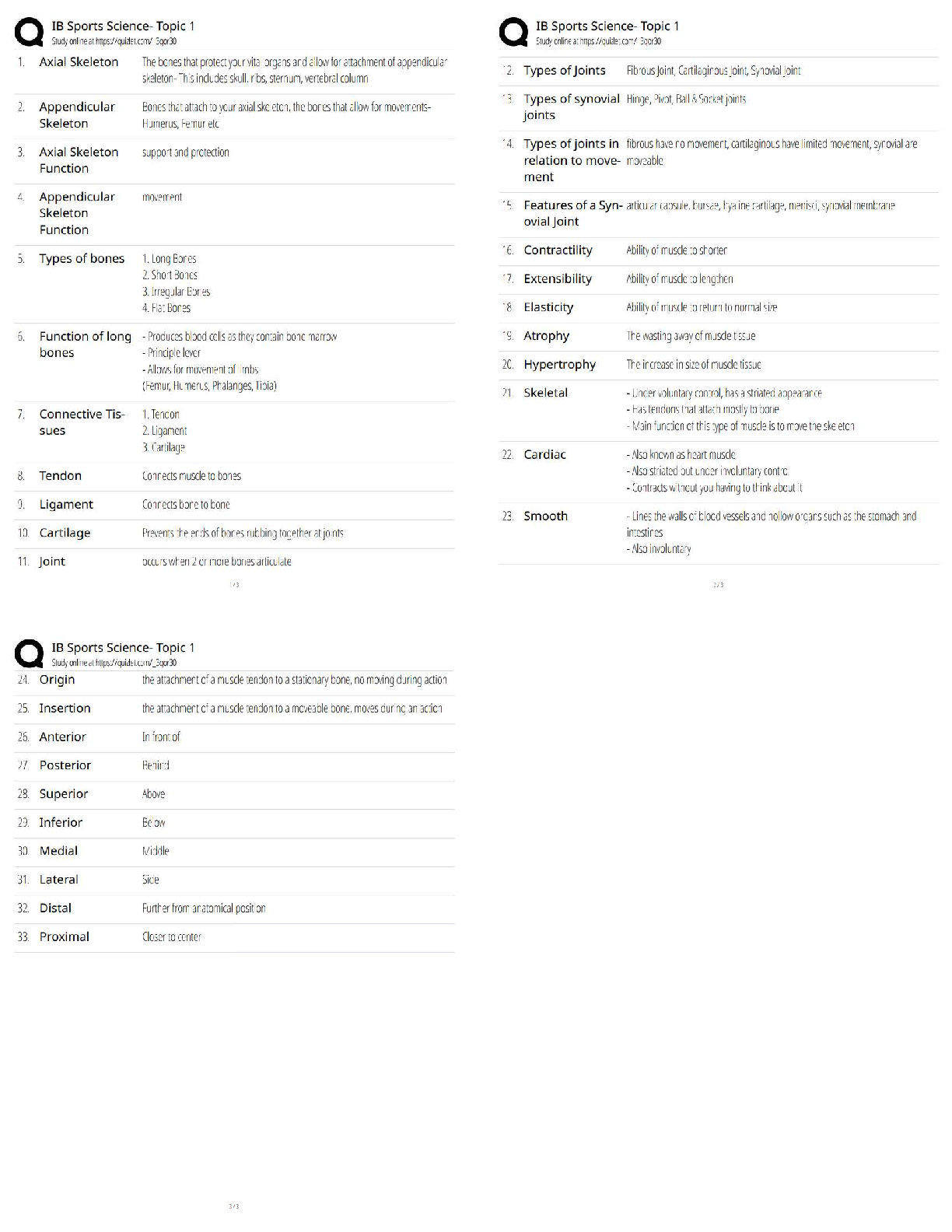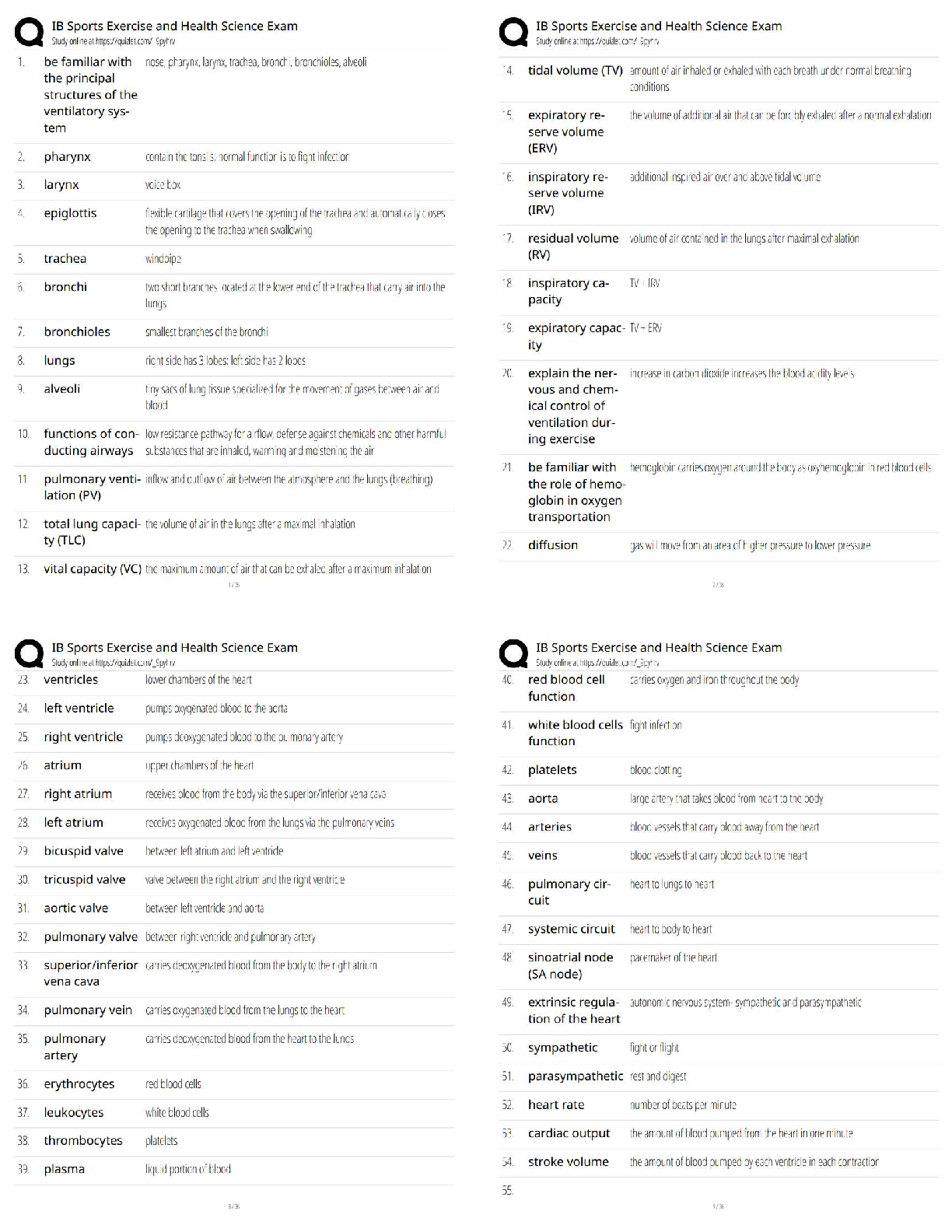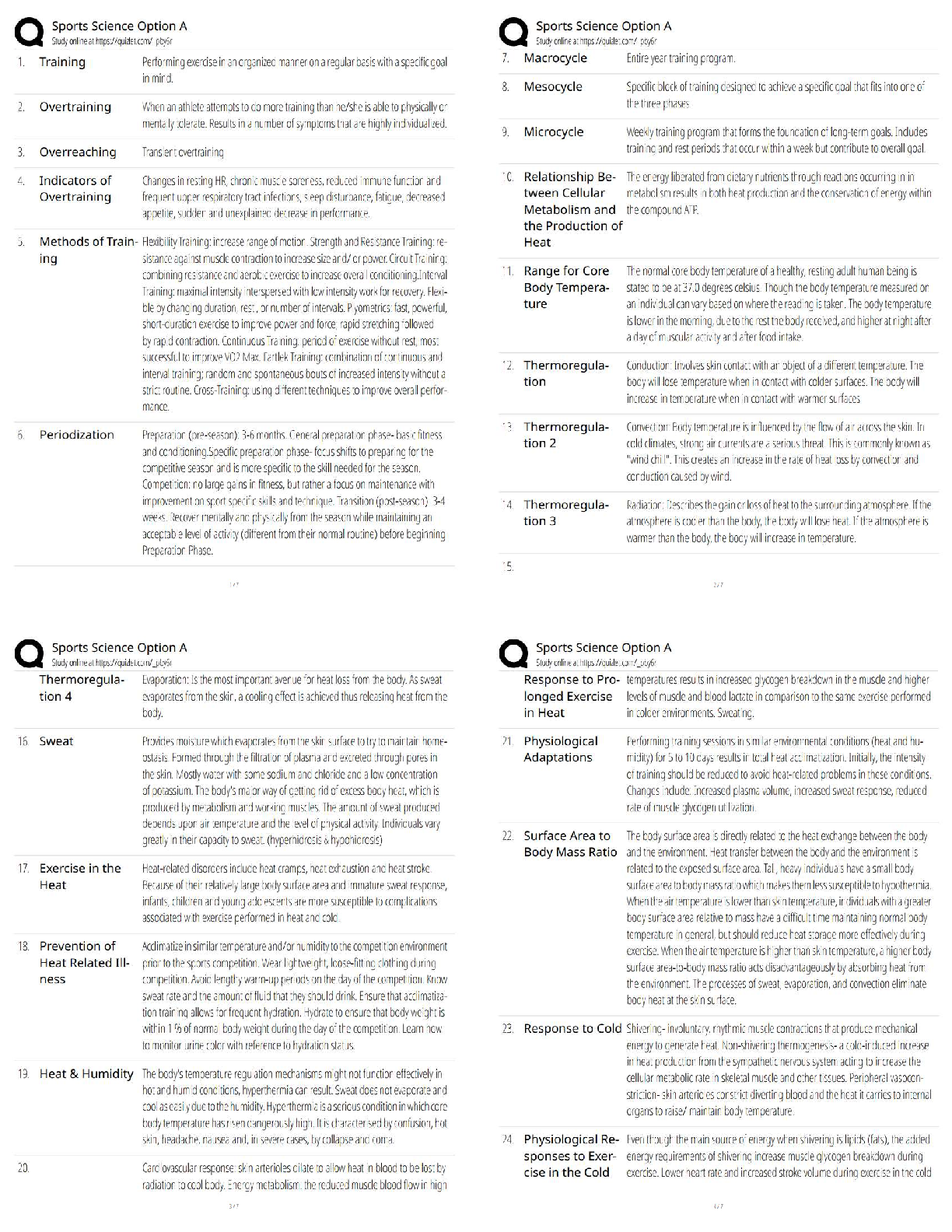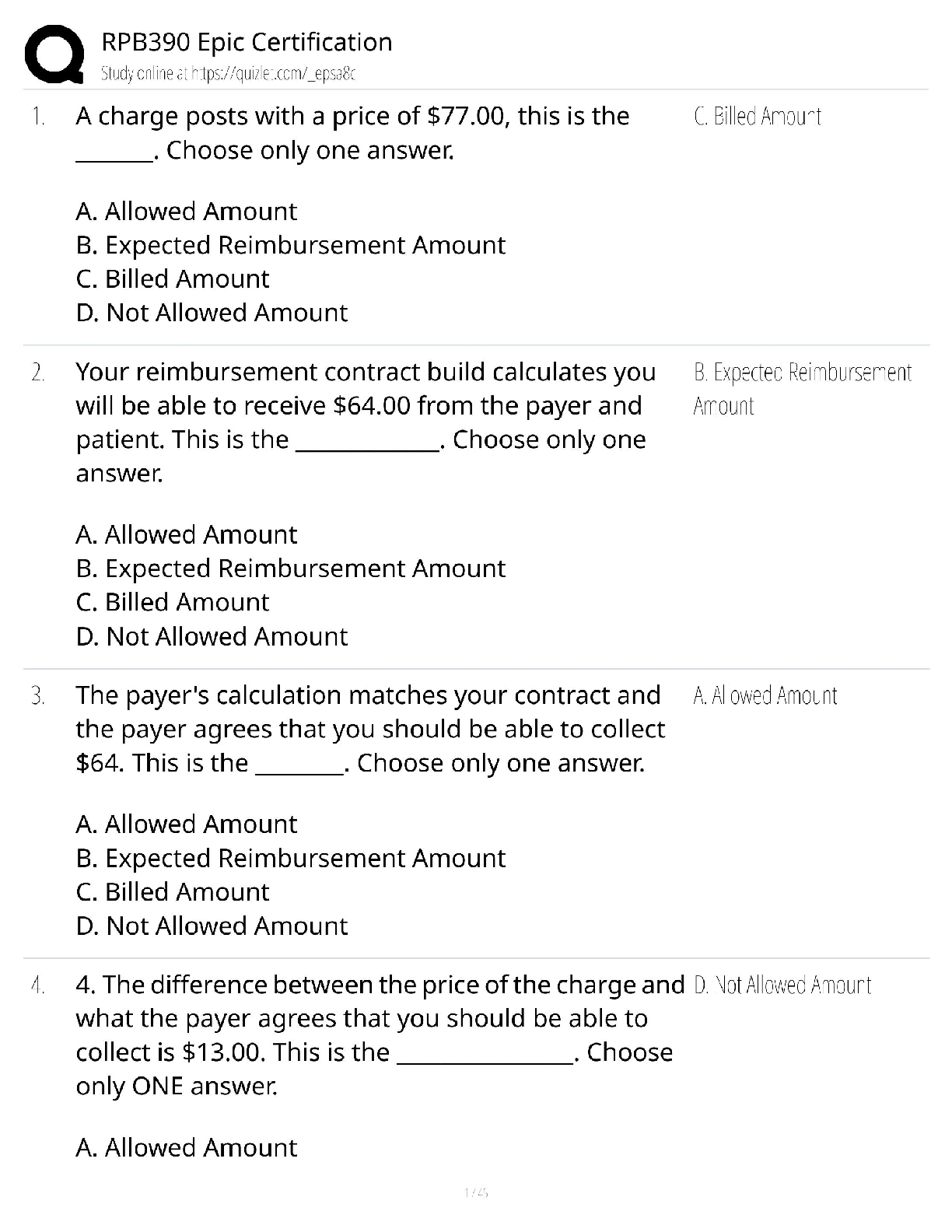Health Care > QUESTIONS & ANSWERS > PATHOPHYSIOLOGY_PATHO 2410 Perfusion and Oxygenation (CHP3) Test Bank Exam Tested Questions and Answ (All)
PATHOPHYSIOLOGY_PATHO 2410 Perfusion and Oxygenation (CHP3) Test Bank Exam Tested Questions and Answers (Revised 2021 Exam Study Guide) - Copy
Document Content and Description Below
PATHOPHYSIOLOGY PATHO 2410 Perfusion/Oxygenation (CHP #3) Test Bank Exam Tested Questions and Answers 1. Which of the following actions causes the atrioventricular (AV) valves to close? a. Increase ... d intraventricular pressure b. Depolarization at the AV node c. Ventricular relaxation and backflow of blood d. Contraction of the atria 2. When stroke volume decreases, which of the following could maintain cardiac output? a. Decreased peripheral resistance b. Increased heart rate c. Decreased venous return d. General vasodilation 3. Which of the following describes the pericardial cavity? a. It contains sufficient fluid to provide a protective cushion for the heart. b. It is a potential space containing a very small amount of serous fluid. c. It is lined by the endocardium. d. It is located between the double-walled pericardium and the epicardium. 4. Which of the following factors greatly improves venous return to the heart during strenuous exercise? a. Rapid emptying of the right side of the heart b. Forceful action of the valves in the veins c. Contraction and relaxation of skeletal muscle d. Peristalsis in the large veins 5. The function of the baroreceptors is to: a. Stimulate the parasympathetic or sympathetic nervous system at the sinoatrial (SA) node as needed. b. Adjust blood pressure by changing peripheral resistance. c. Sense a change in blood oxygen and carbon dioxide levels. d. Signal the cardiovascular control center of changes in systemic blood pressure. 6. The normal delay in conduction through the AV node is essential for: a. Preventing an excessively rapid heart rate b. Limiting the time for a myocardial contraction c. Allowing the ventricles to contract before the atria d. Completing ventricular filling 7. Which of the following is a result of increased secretion of epinephrine? a. Increased heart rate and force of contraction b. Decreased stimulation of the SA node and ventricles c. Vasoconstriction in skeletal muscles and kidneys d. Vasodilation of cutaneous blood vessels 8. Which of the following causes increased heart rate? a. Stimulation of the vagus nerve b. Increased renin secretion c. Administration of beta-blocking drugs d. Stimulation of the sympathetic nervous system 9. The event that causes the QRS wave on an electrocardiogram (ECG) tracing is: a. Atrial depolarization b. Atrial repolarization c. Ventricular depolarization d. Ventricular repolarization 10. The cardiac reserve is: a. Afterload b. The difference between the apical and redial pulses c. The ability of the heart to increase cardiac output when needed d. The extra blood remaining in the heart after in contracts [Show More]
Last updated: 3 years ago
Preview 1 out of 37 pages
 Test Bank Exam Tested Questions and Answers (Revised 2021 Exam Study Guide).png)
Buy this document to get the full access instantly
Instant Download Access after purchase
Buy NowInstant download
We Accept:

Reviews( 0 )
$14.00
Can't find what you want? Try our AI powered Search
Document information
Connected school, study & course
About the document
Uploaded On
Jun 05, 2021
Number of pages
37
Written in
All
Additional information
This document has been written for:
Uploaded
Jun 05, 2021
Downloads
0
Views
146
 Test Bank Exam Tested Questions and Answers (Revised 2021 Exam Study Guide).png)












 Questions and Answers (latest Update), All Correct, Download to Score A.png)
